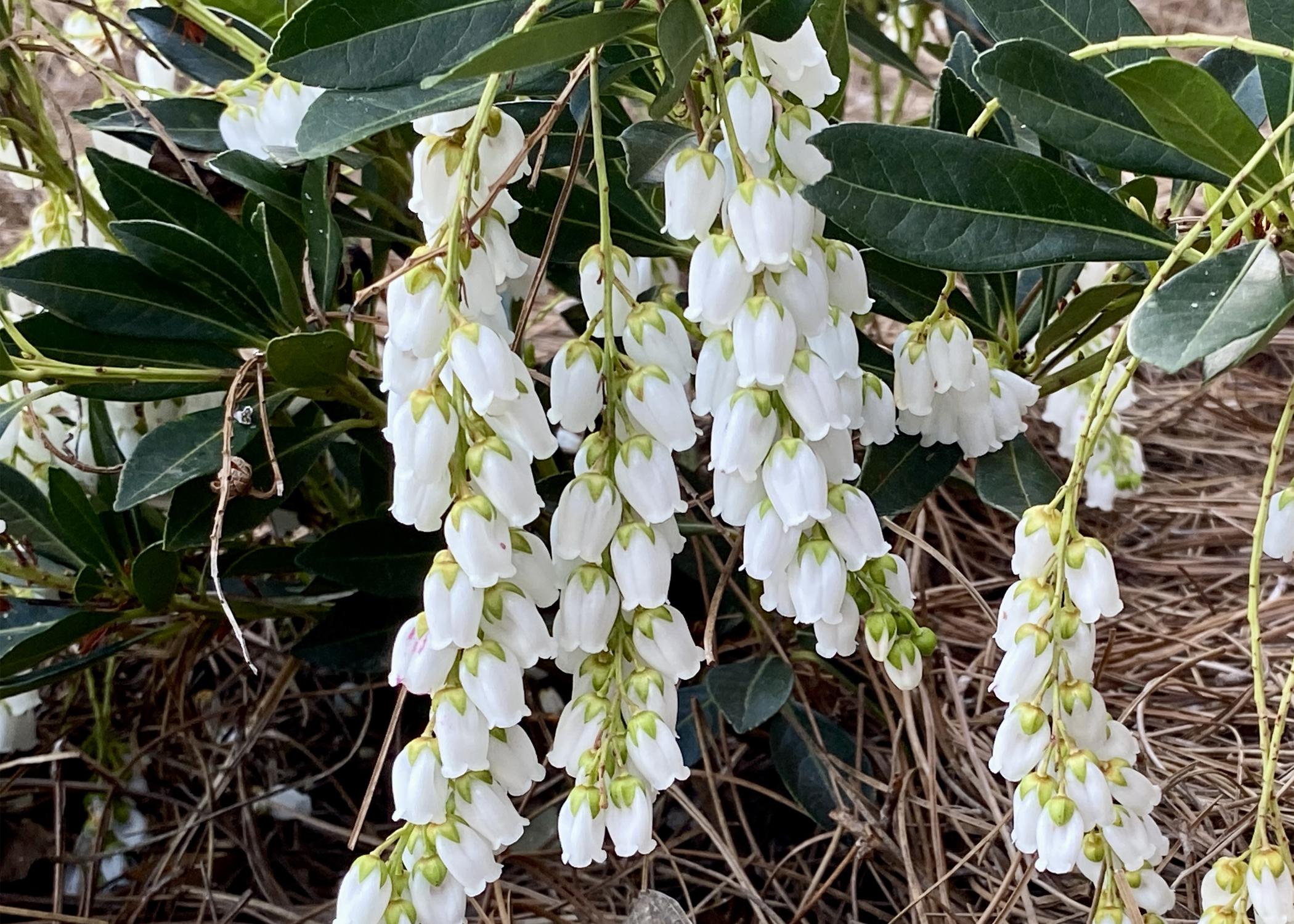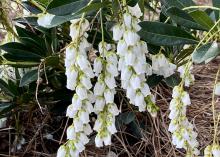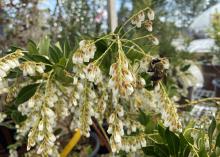Non-native Temple Bells give white winter blooms
I’m always on the lookout for new plants to enhance my landscape, and one of the challenges I face is finding something that blooms during winter and early spring.
Last year while visiting the Flower Bed Nursery in Lumberton, Mississippi, I came across a plant with the most gorgeous white flowers that bloom during this window. It is called Temple Bells, and I couldn’t resist bringing a few home for my garden.
In the last year, Temple Bells, known scientifically as Pieris ryukyuensis, has proven to be a stunning addition.
This evergreen shrub is native to the Ryukyu Islands of Japan and is celebrated for its graceful form and ornamental charm. It typically grows 3 to 8 feet tall and wide at a moderate pace. The dark green, leathery leaves emerge with a bronze or reddish tint, adding seasonal interest before maturing to their glossy green.
In late winter to early spring, Temple Bells becomes the star of my garden, bursting into bloom with clusters of delicate, bell-shaped flowers.
The blooms resemble lily-of-the-valley and are pure white to soft pink. They dangle in cascading racemes up to 6 inches long, creating an elegant, frothy effect against the rich green foliage. Their light, sweet fragrance draws early pollinators like bees.
Caring for Temple Bells has been straightforward.
These plants thrive in U.S. Department of Agriculture plant hardiness zones 6 to 9. They prefer partial to full shade and acidic, well-draining soil enriched with organic matter. I keep the soil for my Temple Bells consistently moist, especially when the plants are young, but ensure it never becomes waterlogged.
To maintain cool, acidic conditions around the roots, I add a 2- to 3-inch layer of pine straw mulch. Watering deeply and allowing the topsoil to dry slightly between waterings have kept the plants happy, even during dry spells.
I fertilize my Temple Bells in early spring and mid-summer with a slow-release formula designed for acid-loving plants like azaleas and rhododendrons. Overfertilizing can be harmful, so I stick to the recommended amounts.
After the flowering season, I pruned lightly to shape the shrubs and remove spent blooms. This kept them looking neat and encouraged healthy new growth.
So far, I’ve had very few issues with pests, although I keep an eye out for lace bugs or leaf spots, especially in times of plant stress. Ensuring good air circulation and avoiding overhead watering has helped prevent disease problems.
In areas with harsh winters, extra mulch around the roots and shelter from strong winds can provide added cold-weather protection.
Temple Bells flowers fit beautifully into my shady garden, making a striking statement alongside other acid-loving plants like camellias and azaleas.
Though less commonly grown than its relative Pieris japonica, it offers a distinctive and elegant charm. With its graceful form, delicate blooms, and year-round appeal, it has become one of my favorite shrubs, adding beauty to my garden during the quietest time of the year.





